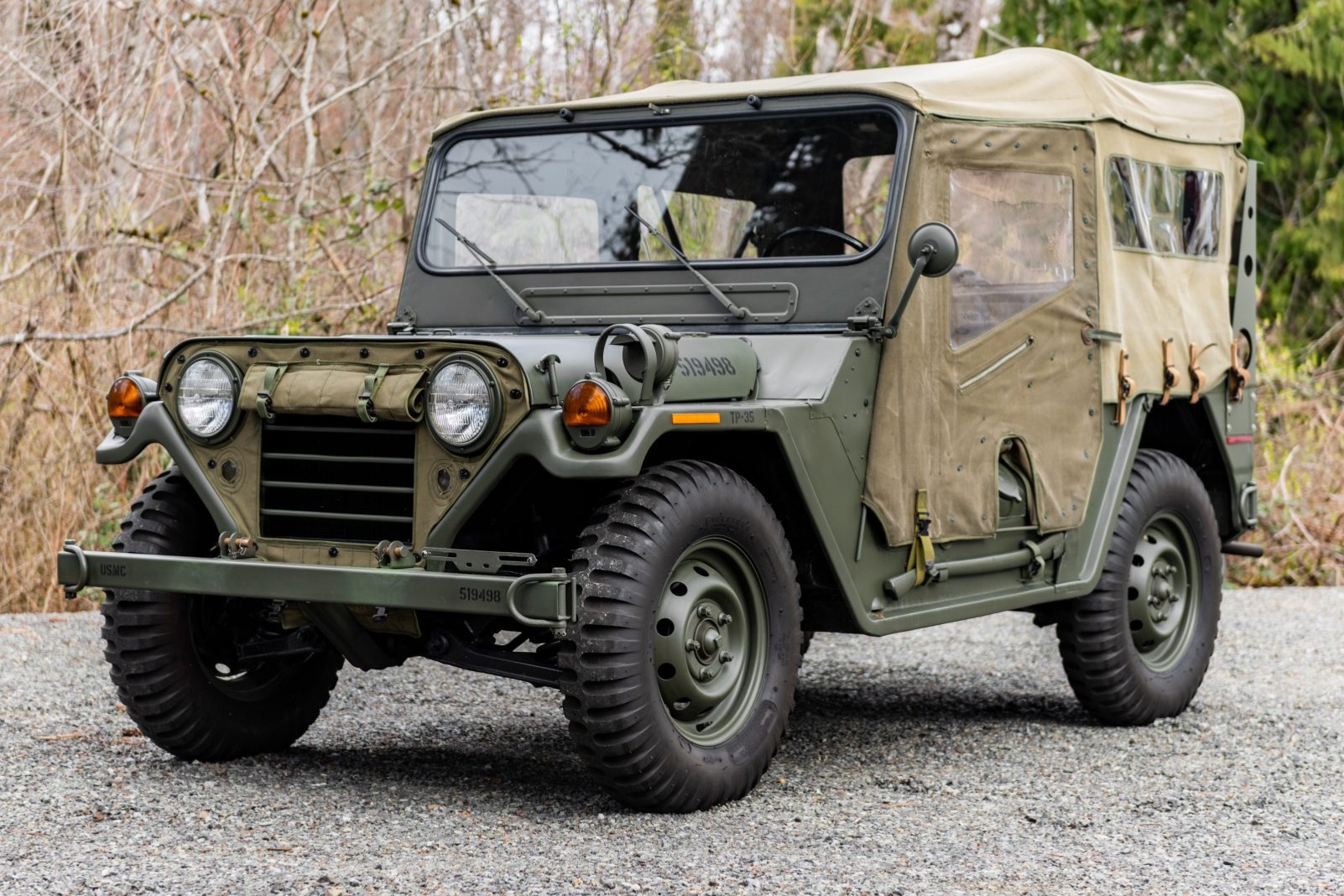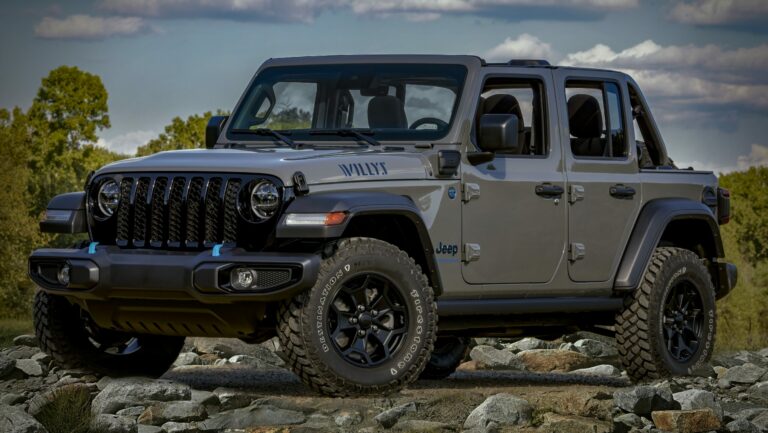M151 Mutt Jeep For Sale: Your Comprehensive Guide to Owning a Piece of Military History
M151 Mutt Jeep For Sale: Your Comprehensive Guide to Owning a Piece of Military History jeeps.truckstrend.com
The rumble of its engine, the iconic flat-fendered profile, and the undeniable aura of military heritage – the M151 MUTT (Military Utility Tactical Truck) is more than just a vehicle; it’s a tangible link to a pivotal era in global history. Succeeding the legendary Willys Jeep, the M151 served as the primary light utility vehicle for the U.S. military from the early 1960s through the 1990s, seeing extensive action in conflicts like the Vietnam War. Today, for enthusiasts, collectors, and history buffs, the prospect of an M151 Mutt Jeep for sale represents an opportunity to own a piece of this remarkable legacy.
This comprehensive guide will delve into everything you need to know about acquiring, understanding, and maintaining an M151 MUTT, transforming what might seem like a complex endeavor into an informed and exciting journey. Whether you’re dreaming of off-road adventures, a unique show vehicle, or simply preserving history, prepare to navigate the world of the M151.
M151 Mutt Jeep For Sale: Your Comprehensive Guide to Owning a Piece of Military History
A Glimpse into the M151 MUTT’s Legacy
The M151 MUTT was developed by Ford Motor Company in the mid-1950s as a successor to the venerable Willys M38 and M38A1 Jeeps. It represented a significant leap forward in military vehicle design, featuring a revolutionary unibody construction (rather than a separate body and frame) and an independent coil-spring suspension at all four wheels. This design provided superior off-road performance, greater comfort, and improved stability compared to its predecessors, making it highly adaptable for various roles, from troop transport and reconnaissance to mounting weapons systems.
Over its production lifespan, the M151 underwent several iterations:
- M151 (1959-1964): The original model, known for its swing-arm rear suspension that, under certain conditions, could lead to roll-overs, especially when unladen and driven aggressively.
- M151A1 (1964-1968): Introduced minor improvements, including stronger rear suspension components, but largely retained the swing-arm design.
- M151A2 (1968-1982): The most common and sought-after variant, featuring a redesigned semi-trailing arm rear suspension that significantly improved stability and reduced the roll-over propensity. This version is often considered the most desirable for civilian ownership due to its improved handling.

Despite its advancements, safety concerns, particularly with the earlier A1 models, ultimately led to its phased replacement by the HMMWV (Humvee) in the 1980s. What followed was a controversial "cut and crush" policy by the U.S. government, aimed at preventing these military vehicles from entering civilian hands due to the perceived safety risks and potential for misuse. This policy significantly reduced the number of M151s available, making those that survived even more valuable to collectors.
Why Buy an M151 MUTT Today?
Owning an M151 MUTT goes beyond mere transportation; it’s an experience steeped in history and mechanical ingenuity.
- Historical Significance: For many, the primary draw is the chance to own a piece of American military history. The M151 was an iconic vehicle of the Vietnam War and subsequent Cold War operations, and owning one connects you directly to that past.
- Unique Driving Experience: Unlike modern, digitally controlled vehicles, the M151 offers a raw, analog driving experience. Its manual steering, robust suspension, and distinctive engine sound provide an engaging and authentic feel that harkens back to a different era of automotive design.
- Exceptional Off-Road Capability: Despite its age, the M151’s independent suspension and lightweight design make it remarkably capable off-road. Its agility and ability to navigate challenging terrain remain impressive, making it a favorite among off-road enthusiasts.
- Collector’s Item and Investment: Well-maintained and original M151s, especially the A2 variant, are increasingly seen as collector’s items. Their scarcity, combined with growing interest in military vehicle preservation, means that their value can appreciate over time.
- Restoration Project: For those who enjoy hands-on mechanical work, an M151 can be a rewarding restoration project. There’s a vibrant community of owners and specialists who can offer guidance and support.
- Show Vehicle and Parade Use: M151s are popular attractions at military vehicle shows, parades, and historical reenactments, allowing owners to share their passion and educate the public about this significant vehicle.

Important Considerations Before You Buy
Before you dive into the market for an M151 Mutt Jeep for sale, it’s crucial to understand the unique challenges and considerations associated with these vehicles.
Legality and Roadworthiness: The "Cut and Crush" Legacy
This is arguably the most critical aspect of M151 ownership, particularly in the United States. Due to the government’s "cut and crush" policy, the vast majority of M151s were demilitarized before being sold off. This often involved cutting the frame in several places to prevent them from being easily reassembled or titled for road use.
- Federal Restrictions: The U.S. government generally prohibits the titling and registration of demilitarized M151s for on-road use. They are typically sold as "off-road use only," "parts only," or for "display."
- State-Specific Laws: While federal restrictions are stringent, some states have more lenient titling and registration laws for antique or historical military vehicles. However, even in these states, obtaining a legitimate title for an M151 that was demilitarized can be exceedingly difficult or impossible. Many "street legal" M151s may have been titled under questionable circumstances or fall into a legal gray area.
- Consequences: Attempting to title or register a demilitarized M151 can lead to legal issues, including confiscation of the vehicle.
- Recommendation: Unless you are absolutely certain of its legal status (e.g., it was one of the very rare units sold to civilians before the "cut and crush" policy took full effect, or you are in a very specific, lenient state), assume any M151 you buy is for off-road, private property, or display use only. Always verify documentation meticulously and consult with your state’s DMV or a legal expert specializing in vehicle titles if you intend to pursue road registration.
Condition and Restoration Needs
As older military vehicles, M151s often come with a laundry list of potential issues:
- Rust: Unibody construction means rust can be a serious structural issue, especially in the floorboards, frame rails, and suspension mounting points.
- Mechanical Wear: Engines, transmissions, transfer cases, and differentials will likely have significant wear and tear.
- Electrical Issues: Old wiring can lead to a host of frustrating problems.
- Suspension Components: Bushings, shocks, and control arms will likely need replacement.
Parts Availability
While many common parts are available from military surplus dealers, specialist suppliers, and online forums, some specific components can be scarce or require fabrication. Reproduction parts are also available, but quality can vary.
Maintenance and Mechanical Skills
These vehicles require regular maintenance and a certain level of mechanical aptitude. If you’re not comfortable turning a wrench or don’t have a trusted mechanic familiar with vintage military vehicles, ownership can become costly.
Safety
The M151 lacks modern safety features like airbags, ABS, or crumple zones. The early M151 and M151A1 models, in particular, have a known propensity for roll-overs if cornered too sharply, especially when unladen. The M151A2 significantly improved this, but it’s still a vehicle that demands respect and careful driving.
Where to Find an M151 MUTT For Sale
Locating an M151 Mutt Jeep for sale requires a targeted approach:
- Online Marketplaces: Websites like eBay, Craigslist (with caution), and general vehicle sales sites often list M151s. Be wary of listings without clear documentation or detailed photos.
- Specialized Military Vehicle Dealers: Several dealers specialize in surplus military vehicles. They often have a curated inventory and can sometimes offer better insights into the vehicle’s history and condition.
- Military Vehicle Forums and Clubs: Online forums (e.g., G503.com, SteelSoldiers.com) and local military vehicle clubs are excellent resources. Sellers often list vehicles directly within these communities, and you can leverage the collective knowledge of experienced owners.
- Auctions: Government surplus auctions (like GovPlanet, though these are typically demilitarized for scrap) or private classic/military vehicle auctions can be sources.
- Word of Mouth: Networking with other collectors and enthusiasts can sometimes lead to hidden gems.
Practical Advice: Always, always inspect the vehicle in person or arrange for a trusted mechanic or experienced M151 owner to do so on your behalf. Photos can be deceiving.
What to Look For When Inspecting an M151 MUTT
A thorough inspection is paramount before purchasing an M151.
- Documentation: This is your first and most important check. Does the seller have a legitimate bill of sale? Is there any record of its demilitarization (e.g., DD Form 1348-1A)? Is there a title, and if so, what kind (e.g., "off-road use only," "salvage," "clear")? Be extremely skeptical of any M151 represented as "street legal" without ironclad, verifiable documentation.
- Body and Frame: Look for rust, especially in critical areas like the floorboards, rocker panels, rear cross-member, and suspension mounting points. Check for signs of accident damage or previous repairs. If it’s a demilitarized vehicle, inspect the cuts and welds to understand the quality of the repair (if any).
- Engine: Check for leaks (oil, coolant), listen for unusual noises (knocks, rattles), and observe exhaust smoke (blue for oil, white for coolant, black for rich fuel mixture). Check oil and coolant levels.
- Transmission and Transfer Case: Test shifting through all gears. Listen for grinding or excessive noise. Check for fluid leaks. Engage and disengage 4×4.
- Suspension: Inspect shocks, springs, control arms, and bushings for wear, damage, or leaks. Look for bent components.
- Brakes: Check the master cylinder for leaks, and inspect lines, calipers/wheel cylinders, and drums/rotors (if modified). Test pedal feel.
- Electrical System: Test all lights (headlights, taillights, turn signals), gauges, and accessories. Look for frayed or patched wiring.
- Tires: Check for tread depth, sidewall cracks, and overall age. Military tires can be old even if they look good.
- Fuel System: Inspect the fuel tank, lines, and carburetor (or fuel injection if a rare conversion) for leaks or corrosion.
Owning and Maintaining Your M151 MUTT
Once you’ve acquired your M151, the journey continues with ownership and maintenance.
- Routine Maintenance: Like any classic vehicle, the M151 thrives on regular attention. This includes oil changes, checking all fluid levels (coolant, brake fluid, transmission, transfer case, differentials), greasing chassis points, and inspecting belts and hoses. Refer to the original military Technical Manuals (TMs) – these are invaluable resources and readily available online.
- Common Issues: Be prepared for common issues such as carburetor tuning, electrical gremlins, worn universal joints, and leaky seals. A good set of basic tools and a service manual will be your best friends.
- Parts Sourcing: Leverage the online communities and specialized dealers mentioned earlier. Many parts are interchangeable between the different M151 variants, but always verify before purchasing.
- Community: Join M151 owner forums and local military vehicle clubs. These communities are incredibly supportive, offering advice, troubleshooting tips, and even spare parts.
- Modifications: While some owners opt for modern upgrades (e.g., 12V conversion, disc brakes), keeping the vehicle as original as possible generally preserves its historical value and appeal to collectors. If you do modify, ensure it’s reversible.
M151 Mutt Jeep For Sale: Estimated Price Guide
The price of an M151 MUTT can vary significantly based on its condition, variant (M151, A1, A2), completeness, and most importantly, its legal status and documentation. The prices below are general estimates for M151A2 models, which are typically more desirable. Early M151/A1 models may be slightly less unless they are exceptionally rare or historically significant.
| Condition Category | Estimated Price Range (USD) | Key Characteristics |
|---|---|---|
| Poor / Parts Vehicle | $2,500 – $6,000 | Often demilitarized (cut frame), incomplete, significant rust, non-running engine, major mechanical issues. Suitable for parts donor or a full frame-off restoration by an experienced builder. Often lacks any road-legal documentation. |
| Fair / Running Project | $6,000 – $12,000 | Runs and drives, but needs substantial mechanical work (engine overhaul, transmission rebuild, brake system, suspension). Moderate rust. May be complete but requires extensive cosmetic restoration. Often sold as "off-road use only" with bill of sale. |
| Good / Driver Quality | $12,000 – $20,000 | Mechanically sound and reliable enough for regular off-road or parade use. Minor rust or cosmetic imperfections. All systems generally functional. May have an older restoration or well-maintained original components. Documentation usually clear for off-road/display. |
| Excellent / Restored | $20,000 – $35,000+ | Professionally restored or meticulously maintained original condition. Minimal to no rust. All systems fully functional and correct. Often includes period-correct accessories. These command premium prices and are rare. May have clearer documentation for historical vehicle status. |
Note: Prices are highly variable and depend on market demand, location, and the specific history/provenance of the vehicle.
Concluding Summary
The M151 MUTT is a fascinating and rewarding vehicle to own, offering a unique blend of military history, mechanical simplicity, and undeniable character. However, prospective buyers must approach the M151 Mutt Jeep for sale market with eyes wide open, particularly concerning the complexities of its legal status in civilian hands. Thorough research, careful inspection, and a realistic understanding of the commitment required for ownership are paramount.
Beyond the challenges, owning an M151 is more than just possessing a vehicle; it’s joining a passionate community, preserving a vital piece of military heritage, and experiencing a form of driving that is increasingly rare. For the dedicated enthusiast, the M151 MUTT remains an unparalleled symbol of rugged utility and enduring legacy.
Frequently Asked Questions (FAQ) about M151 MUTT Jeeps
Q1: Is the M151 MUTT street legal in the United States?
A1: Generally, no. The U.S. government implemented a "cut and crush" policy for most surplus M151s, making them illegal for on-road use due to perceived safety risks and to prevent them from being used for military purposes by civilians. Most M151s sold to the public are designated "off-road use only" or "parts vehicles." While some states may have very specific exemptions for historical military vehicles, obtaining a legitimate road-legal title for a demilitarized M151 is exceedingly difficult and often impossible. Always assume it’s for off-road or display use unless you have ironclad, verifiable documentation.
Q2: What are the main differences between the M151, M151A1, and M151A2?
A2: The primary difference lies in the rear suspension design and subsequent handling characteristics.
- M151 (Original): Features an independent swing-arm rear suspension that, under certain conditions (e.g., hard cornering with an unladen rear), could lead to instability and roll-overs.
- M151A1: Minor improvements over the M151, but largely retained the swing-arm rear suspension, thus sharing similar handling characteristics.
- M151A2: The most significant revision, introducing a redesigned semi-trailing arm rear suspension. This greatly improved stability, reduced the roll-over risk, and made it the most desirable variant for civilian ownership.
Q3: Are M151 parts hard to find?
A3: While not as readily available as parts for modern vehicles, a robust aftermarket and surplus network exists. Many common parts (engine components, electrical items, suspension bushings) can be sourced from military surplus dealers, specialized M151 parts suppliers, and online forums. Some rarer body parts or specific components might require more searching or fabrication.
Q4: How much does an M151 MUTT typically cost?
A4: Prices vary widely based on condition, variant, and documentation. A non-running "parts" vehicle can be as low as $2,500, while a fully restored, excellent condition M151A2 can fetch $20,000 to $35,000 or more. Refer to the "Estimated Price Guide" table in this article for more details.
Q5: Is the M151 MUTT safe to drive?
A5: The M151 lacks modern safety features (airbags, ABS, crumple zones). The early M151 and M151A1 models have a known tendency to roll over if cornered aggressively, especially when unladen. The M151A2 significantly improved this, but it’s still a lightweight vehicle with a high center of gravity. Driving an M151 requires caution, awareness of its limitations, and respect for its design. It is not recommended for new drivers or those unfamiliar with vintage vehicle handling.
Q6: Can I use an M151 MUTT as a daily driver?
A6: While technically possible for some, it is generally not recommended. M151s are old military vehicles that require more frequent maintenance, lack modern comforts (like air conditioning, power steering, or a smooth ride), and are not designed for modern highway speeds. Their legal status (often off-road only) also precludes daily street use in most areas. They are best suited for off-road recreation, parades, military vehicle shows, or as collector’s items.





